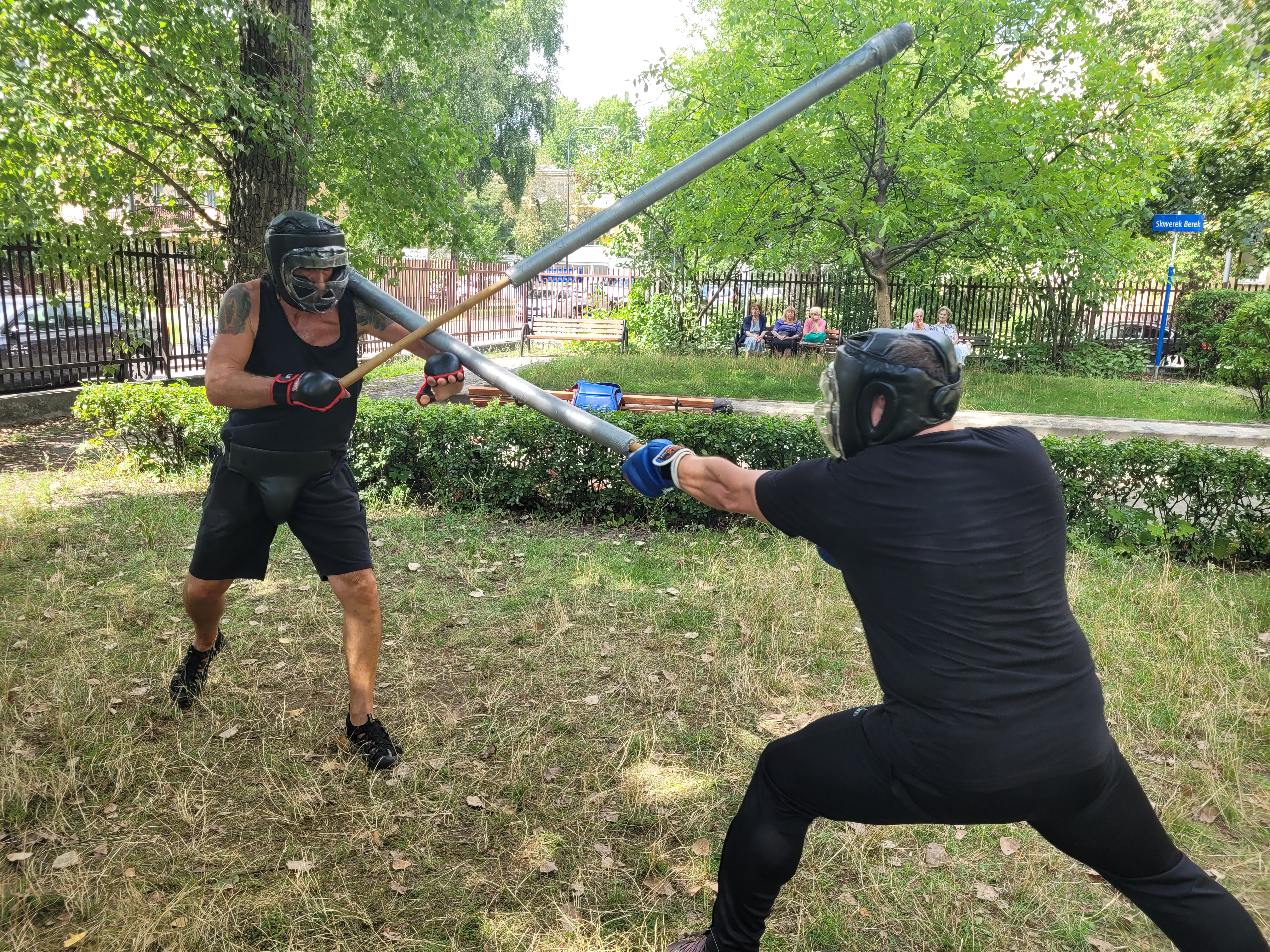Yiquan and weapons
Wang Xiangzhai
Unarmed combat and using weapons
From „Central pivot of the way of fist”
Ancient masters said: “When you develop unarmed combat abilities, it is easy to learn using weapons, you should not practice only with sabre and spear”. If you understand essence of combat, functions of various forces, changes in the position of sections and surfaces, empty and full, long and short, diagonal and straight, using three sections and nine parts, paths, directions, high and low, proper timing, when you understand it and master it by intuition, then when you use sabre, sword, spear, stick or other weapon, even someone who is a specialist in that kind of weapon but doesn’t understand and has not mastered those basics will not be a dangerous opponent for you. This is a difference like between an engineer and a worker, between a doctor and a nurse. These are not levels which could be compared.
Zhao Daoxin
Weapons
From „Daoxin's fist theory”
Weapons (meaning cold weapons) appeared even earlier then the art of fist fighting. Already primeval man understood that animal or human enemy can be easier defeated by using stone or stick than just bare hands. With development of civilization stone was replaced by bronze and then by iron. Gradually weapons improved, there appeared bigger variety and efficiency increased.
In ancient times instruments were used in soldiers training. Till present time exercises with sword and spear are used. To decrease number of cases of injuries and deaths during training, bare hand training was used as kind of preliminary preparation for training with weapons. Sometimes training with weapons was omited, and only bare hand fighting was practiced. Presently mainly taolu forms with weapons are popular, and we can seldom see practical methods of using weapons.
As we are learning this, we should precisely know meaning and value of training with weapons.
There are many kinds of weapons. There was a saying about eighteen kinds. But actually they are not limited to this number. Usually we divide weapons for long (spear, staff), short (sabre, sword), wery short (dagger), soft (whip), used for attacking from distance (bow and arrows) etc. But generally we can talk about two kinds: with sharp metal element on side or top, placed on long stick or handle and wooden weapons. So if you master one or two kinds of weapons, others will seem similiar.
Weapon is more dangerous than hands and legs, as it can be used from longer range, is hard, the surface of contact with target is small. And thanks to leverage the top of weapon can achieve big speed.
But weapons have some disadvantages comparing to hands. Weapon is something outside of your body, it is difficult to use it such naturally as hands. So training and using of weapons is much more difficult. Also in short range some weapons can be difficult to use.
Main methods of using weapons are: piercing, cutting, deflecting, connecting. Not talking about complex method, even those simple methods need hard training. It is important that spirit and force are transmitted through weapon, as i it was one with you body, as if extention of your arms, so you achieve the state, when hands as if forget about weapon, weapons as if forgets about hands, as if there was not such differentiating.
Improving the level of skill of bare hand fighting helps with improving skill of using weapons. At the same time progress in training with weapon can be of great help for increasing skill of bare hand fighting.
Yao Zongxun
Training with weapons
From answers to questions asked by Huo Zhenhuan (Ian Fok)
Talking about practicing with staff and sword - you need to achieve relatively high level in empty hand training, before you start weapons training. The „strength” should be expressed also in yiquan weapons training. Also here we are using the principle „contact and issue power, issue power and stop”. Without having solid basis in empty hand practice, it is difficult to benefit from practice with weapons, because both are related.




Comments
Post a Comment